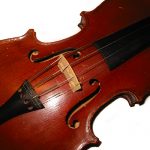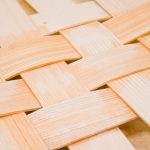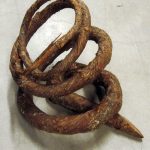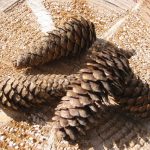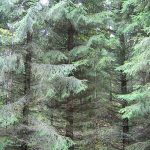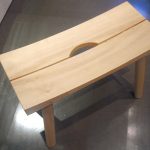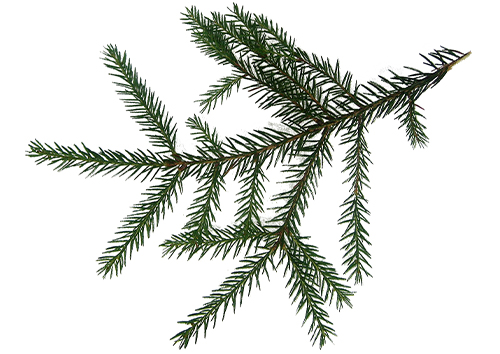
- Spruce (E)
- Gran (S)
- Fichte (D)
- le sapin (F)
Spruce is the last tree species that spread to Finland after last ice age.
Distribution
- Spruce grows in the North European boreal forest zone, also known as taiga.
- Spruce thrives almost everywhere in Finland. The only exceptions are the fells above the coniferous treeline.
- It is the second most common tree species in Finnish forests, for approximately 36% of the trees are spruce.
Habitat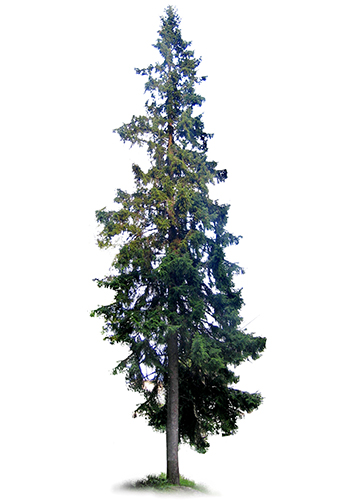
- Spruce prefers a shady habitat. Young spruces are sensitive to frost.
- A good habitat is a grassy woodland or a dry peaty blueberry forest with heavy moss and lichen cover, which has fresh soil rich in nutrients.
- It is vulnerable to dry conditions, storms, air pollutions and damage caused by rot.
- In a poor habitat spruce provides good quality wood if it grows densely enough. In such conditions the trunk grows fewer branches.
Growth characteristics
- Spruce is an evergreen tree, whose crown is broadish and conical.
- Spruce may grow up to 40 meters high and one meter thick. Its trunk is grey or brown and the bark is rough.
- The trunk of a quality spruce is straight and limbless. The lower stem is free of knots or the knots are small. The trunk has to be smooth and clean from resin leaks.
- A quality log taken from the lower stem has a diameter of at least 30 cm.
- The root system is quite shallow, and therefore spruce stands are vulnerable to storm damage.
- The Finnish spruce has several subspecies. One of them is the siberian spruce (Picea abies subsp. obovata), which has a thinner crown than a common spruce, and which grows in Northern Finland.
Characteristics of wood
- Spruce wood is light-coloured, and the yellowish heartwood is not clearly distinguished from the cambium.
- Spruce is straight grained and flexible to a lesser extent.
- The wood shrinks a little during the drying process, but it warps more than pine wood. Wood with thinner annual rings is harder and shrinks less.
- It cracks easily, but withstands humidity variation well.
- From the point of view of the carpentry industry, the disadvantages of spruce are its numerous branches and resin.
- A-class spruce wood is, at its best, raw material for musical instruments. Then it has grown in a dry peaty forest with heavy moss and lichen cover, because in such conditions its annual rings grow thin and even.
- The weight of air-dry sawn timber is 300- 480 kg/m3.
- A-class wood is even in colour. Its surface should be smooth. The thickness of the annual rings should not be over 3 mm.
- B-class spruce has more branches and it is more fast-growing. It is used for making glue boards, furniture and boards.
- C-class spruce is not generally used in the carpentry industry. It is used for building logs and other building materials.
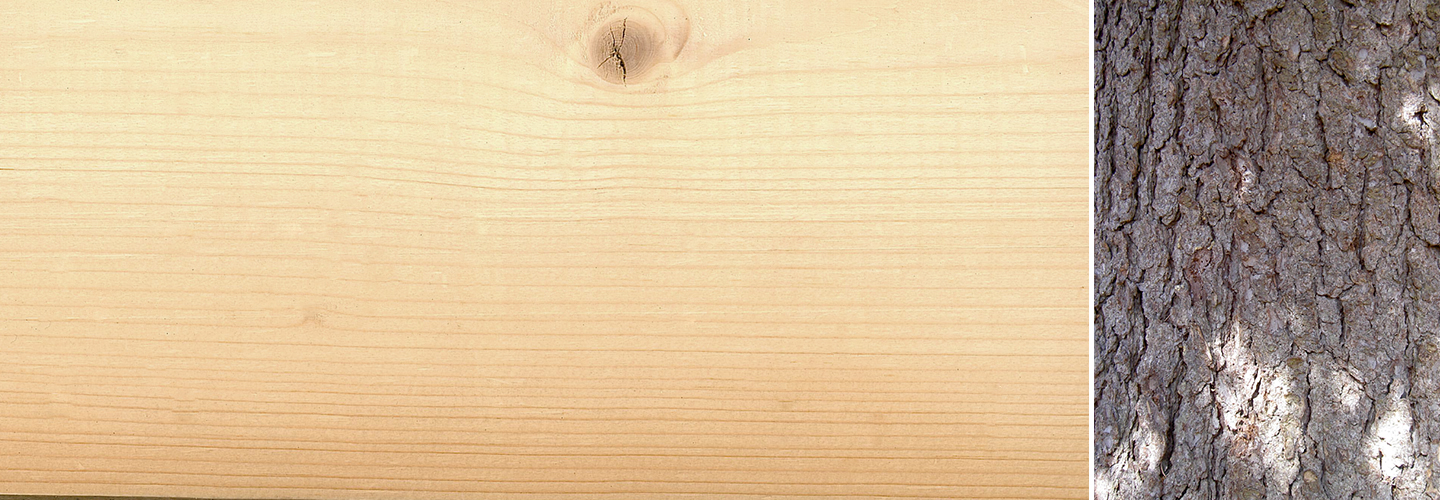
Surface treatment
The wood samples have been surface treated as such:
- Left, water-based acrylic lacquer
- Center, no treatment
- Right, two component catalystlacquer or oil
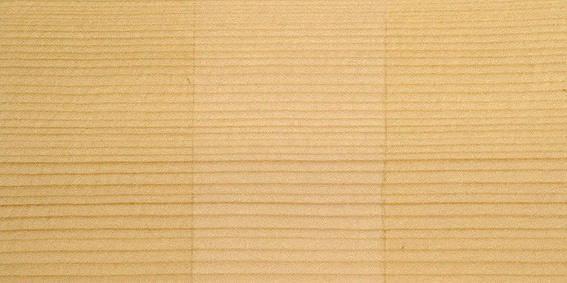
Radial cut
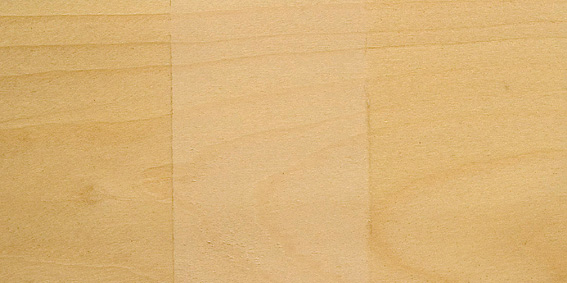
Tangential cut
Usage
- Spruce is used for making; furniture, doors, window frames and other building materials.
- It is also used in the packaging industry and as raw material for plywood.
- Quality spruce is used for making musical instruments, for example violins.
- Spruce is good long-fibered raw material for the paper industry and different chemical products, such as synthetic fibers (viscose)
- Uses from the past: charcoal, roof shakes, tanning, musical instruments, fencing, floors, weatherboarding
